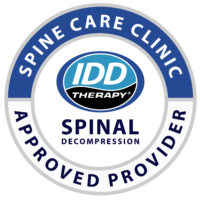Pelvic Floor Physiotherapy
The latest breakthrough in women’s health
32% of women will have at least one pelvic floor disorder at one time in their life. At Atkins Physiotherapy, we have our own specialist pelvic floor physiotherapist who can advise on and help alleviate a range of conditions affecting the pelvic floor.
Available treatment options include:
- Percutaneous tibial nerve stimulation (PTNS)
- Biofeedback
- Neuromodulation therapy
COMMON PELVIC FLOOR PROBLEMS THAT WE TREAT:`
• Bladder Issues (Frequency, Urgency, Incontinence) • Pelvic Floor Dysfunction • Bowel Dysfunction (Constipation, Incontinence) • Pelvic Pain • Pelvic Organ Prolapse • Endometriosis • Painful Sex • Scar Tissue / Adhesions • Hip and Lower Back Pain • Antenatal and Postnatal Issues
Bladder weakness is actually more common than hayfever. 35% of women have avoided a situation that makes them laugh because of bladder weakness.
As a relatively new treatment field, demand for pelvic floor physiotherapy in the NHS is particularly high, resulting in long waiting lists. With our service, we’re hoping to break down some of the boundaries around this once-delicate subject and help more women feel comfortable and confident in their everyday lives.
HOW PELVIC FLOOR PHYSIOTHERAPY WORKS
Pelvic floor physiotherapy is a branch of physiotherapy which includes exercises and an electronic device to train the pelvic floor muscles. The therapy and device is always tailored to the specific needs of the individual.
Treatment is considered very safe. The aim is to improve overall quality of life, including self-esteem, independence, relationships, and potential employment issues.
OUR PELVIC FLOOR PHYSIOTHERAPIST — JENCY SUDHA
Jency is a Consultant Pelvic Health Physiotherapist and Biofeedback Specialist at Atkins Physiotherapy, with over 18 years of experience in women’s health. She holds a Master’s degree in Obstetrics and Gynaecology, specialising in Women’s Health, and is an expert in the assessment and treatment of pelvic floor dysfunction.
Alongside her private practice, Jency is a Highly Specialised Pelvic Health Physiotherapist at the Royal London Hospital, working within the colorectal and pelvic floor team to treat patients with incontinence, constipation, defecatory disorders, and pelvic floor muscle weakness.
Jency is passionate about empowering women to understand their bodies and regain control of their pelvic health, adopting a holistic, patient-centred approach that combines advanced clinical expertise with compassionate care.
Jency is an active member of the Association of Pelvic Obstetric and Gynaecological Physiotherapists (POGP), through which she stays engaged with the latest research and best practice in the field.
FREQUENTLY ASKED QUESTIONS
What is the role of the pelvic floor?
The pelvic floor is a group of muscles that stretch like a hammock from the pubic bone to the coccyx (front to back), and from one sitting bone to the other (side to side). These muscles work together to support the spine (pelvic stability) and control the pressure inside the abdomen. They also support the pelvic organs (vagina, uterus, anus and rectum).
What is meant by pelvic floor dysfunction?
Pelvic floor dysfunction refers to either increased or decreased activity of the pelvic floor muscles, leading to a range of life-impacting issues.
Urinary symptoms: stress incontinence, urgency or urge incontinence, frequency, hesitancy, nocturia (needing to go in the night)
Bowel symptoms: incontinence, urgency, constipation or incomplete evacuation, (in)frequency
Other symptoms: chronic pelvic pain, perineal descent, pelvic organ prolapse
How do pregnancy and childbirth affect the pelvic floor?
60% of women will experience bladder weakness either during or after pregnancy. And about 50% of women will have some degree of pelvic organ prolapse after giving birth.
Does pelvic floor muscle training work?
The research says yes. Many researchers have proven that physiotherapists can improve patient outcomes predominantly by promoting pelvic floor training and lifestyle modification. The NHS believes that pelvic floor training holds the key.
What is percutaneous tibial nerve stimulation (PTNS)?
PTNS is one of a range of treatments known as neurostimulation. It works by transmitting small electrical impulses through a nerve in your leg (the tibial nerve) to the sacral nerves in your lower spine. The sacral nerves are responsible for regulating bowel and bladder control, and it is thought that stimulating them can improve the function of these organs.
What is biofeedback/STIM?
Biofeedback/STIM is a neuromuscular technique for training appropriate pelvic floor contraction and relaxation. Intra-anal, intra-vaginal, or surface electrodes are incorporated with strengthening and relaxation exercises to provide patients with visual and/or auditory responses to their efforts, hence the term ‘biofeedback’.
What is neuromodulation therapy?
Neuromodulation involves stimulating the nerves using certain devices like Urgent® PC neuromodulation stimulators.
What devices are used, and are they safe?
The devices we use in our clinic include:
- Neurotrac Continence Pelvic Exerciser
- Neurotrac Simplex EMG Biofeedback
- PC Neuromodulation Stimulator
Treatment is considered to be safe, non-invasive and well-tolerated. It is associated by patients with perceived improvements in daily life and emotions.
The levels of stimulation used during treatment are far below those which could cause any damage to the nerves.
Does it hurt?
You will feel the electrical stimulation working, but the treatment should not hurt, and Jency will be on hand to adjust the device settings so you feel comfortable.
It is not unusual during the session for you to get used to the stimulation and notice it less or even for the sensation to go away. This is quite normal and does not mean that the treatment has stopped working.
You may feel some tingling or numbness in your foot for about half an hour after treatment. This is quite normal. You can resume your normal daily activities immediately after treatment.
For PTNS treatment, a small needle is inserted in the ankle, so there may be some slight bleeding and/or bruising around the insertion site.
What does a typical course of treatment look like?
During your initial assessment, Jency will complete a detailed history-taking and assessment of your pelvic floor related problems, as well as the results of any previous tests you have had done. Following this, a personalised treatment plan will be formulated for you. Your plan will include advice about your diet, exercise, nerve stimulation / biofeedback, medication, and lifestyle.
An initial course of treatment would be 12 sessions each lasting 30 minutes, once or twice a week. No preparation is required, and no after-effects are expected.
The effect of the treatment is cumulative over time, so most people find that at least 6-8 sessions have to be completed before they start to feel an improvement.
If successful, 2-3 treatment sessions would follow to taper off the treatment. Individuals who are successfully treated are free to resume their normal lives.
Maintenance treatment would generally include 2-3 sessions every 6 months.
Is there anyone who should not have this treatment?
The following exclusion criteria apply to PTNS:
- Pregnancy
- Implanted stimulator, pacemaker or defibrillator
- Tendency to excessive bleeding
- Peripheral neuropathy
- Circulatory problems in foot
- Sciatica
For those individuals who are ineligible for PTNS, Jency will explore biofeedback or neuromodulation therapy options with you.
Where can I find out more about the evidence base for pelvic floor physiotherapy?
The following links are references to clinical research studies in this developing field, all published in the U.S. National Library of Medicine:
Faubion SS, Shuster LT, Bharucha AE. Recognition and management of nonrelaxing pelvic floor dysfunction. Mayo Clinic Proceedings. 2012 Feb; 87(2): 187-93. [PubMed]
Butrick CW. Pathophysiology of pelvic floor hypertonic disorders. Obstetrics and Gynecology Clinics of North America. 2009 Sep; 36(3): 699-705. [PubMed]
Whitehead WE, Bharucha AE. Diagnosis and treatment of pelvic floor disorders: What's new and what to do. Gastroenterology. 2010 Apr; 138(4): 1231-5, 1235.e1-4. [PubMed]
Akuthota V, Nadler SF. Core strengthening. Archives of Physical Medicine and Rehabilitation. 2004 Mar; 85(3 Suppl 1): S86-92. [PubMed]
Tu FF, Holt J, Gonzales J, Fitzgerald CM. Physical therapy evaluation of patients with chronic pelvic pain: A controlled study. American Journal of Obstetrics and Gynecology. 2008 Mar; 198(3): 272.e1-7. [PubMed]
Good MM, Solomon ER. Pelvic floor disorders. Obstetrics and Gynecology Clinics of North America. 2019 Sep; 46(3): 527-540. [PubMed]
Spence-Jones C, Kamm MA, Henry MM, Hudson CN. Bowel dysfunction: A pathogenic factor in uterovaginal prolapse and urinary stress incontinence. British Journal of Obstetrics and Gynaecology. 1994 Feb; 101(2): 147-52. [PubMed]
Iacobellis F, Reginelli A, Berritto D, Gagliardi G, Laporta A, Brillantino A, Renzi A, Scaglione M, Masselli G, Barile A, Romano L, Cappabianca S, Grassi R. Pelvic floor dysfunctions: How to image patients? Japanese Journal of Radiology. 2020 Jan; 38(1): 47-63. [PubMed]
Aoki Y, Brown HW, Brubaker L, Cornu JN, Daly JO, Cartwright R. Urinary incontinence in women. Nature Reviews. Disease Primers. 2017 Nov 16; 3:17097. [PubMed]
FitzGerald MP, Kotarinos R. Rehabilitation of the short pelvic floor. II: Treatment of the patient with the short pelvic floor. International Urogynecology Journal Pelvic Floor Dysfunction. 2003 Oct; 14(4):269-75; discussion 275. [PubMed]





